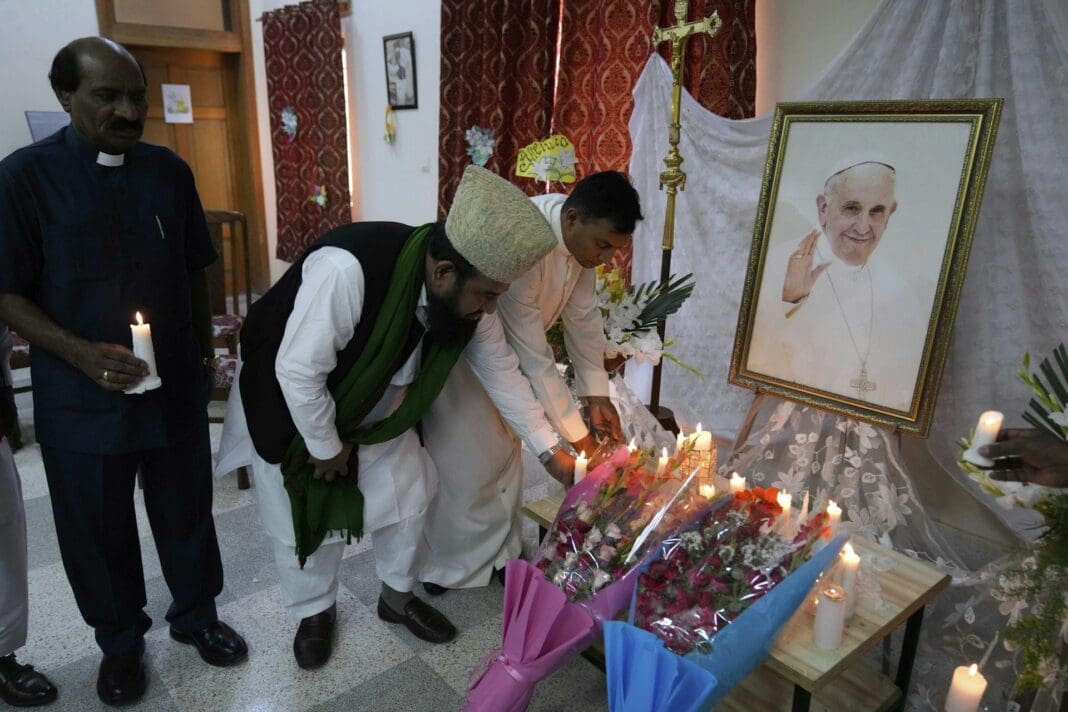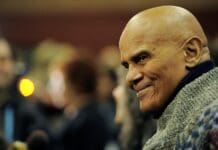Pope Francis’ pontificate marked a distinct shift in the Catholic Church’s engagement with the Muslim world. While his predecessors fostered dialogue and tolerance, Francis sought more active engagement with Muslims, particularly in the Middle East.
Francis framed his efforts around the “culture of encounter,” which he explained in a 2016 morning meditation. Drawing inspiration from the Gospel of Luke, Chapter 7, he noted that this approach was about “active engagement” rather than passive observation. He urged individuals to embody Jesus by “not just seeing, but looking; not just hearing, but listening; not just passing people by, but stopping with them.”
In my 2025 book “Beyond Dialogue – Building Bonds Between Christians and Muslims,” I stress the importance of moving beyond mere tolerance to collaboration as a way to engage with religious diversity − something that Francis demonstrated in his interfaith dialogue efforts with Muslim countries.
In 2021, Francis visited regions in Iraq once held by the Islamic State, or IS. This was the first papal visit to the country. He held masses in Irbil, the capital of the Kurdistan region of Iraq, and he addressed a gathering in the courtyard of the Al-Tahera church, the hub of the Syriac Catholic population in Mosul. The historic 18th-century church was partially destroyed by IS during its occupation of the city from 2014 to 2017. An estimated 5,000 Christians were killed and some 125,000 displaced in Iraq during that time.
At Church Square in Mosul, where there are four churches, Francis prayed for the victims of the conflict and called for harmonious coexistence between Christians and Muslims. He also invited displaced Christians to return to their homes and praised the young Iraqi volunteers – both Christians and Muslims – working side by side to rebuild the churches and mosques destroyed by IS.
In addition, he convened an interreligious gathering in Ur, the birthplace of Abraham, a prophet revered by Jews, Christians and Muslims.
His actions not only brought together Christians and Muslims but also helped break down stereotypes.
In 2019 he visited the United Arab Emirates, marking the first papal visit to the Arabian Peninsula, the birthplace of Islam. The visit coincided with the Emirati government proclaiming 2019 the Year of Tolerance, promoting coexistence, diversity and respect.
During his visit in Abu Dhabi in 2019, Francis celebrated a historic Catholic Mass in Zayed Sports City, drawing 180,000 attendees from over 100 countries, for which the UAE government declared a special holiday.
This unprecedented event challenged negative Western stereotypes about the Arabian Peninsula’s religious intolerance. The UAE Constitution, for example, guarantees religious freedom to all people, albeit with restrictions on proselytization among non-Islamic communities. It also offered a counternarrative of unity between Christians and Muslims in a region often viewed through a lens of religious strife and war.
Francis’ visit to the UAE also culminated in some crucial interfaith initiatives. In Abu Dhabi, Francis and the Grand Imam of Al-Azhar University, Ahmed El-Tayeb, cosigned the document on Human Fraternity for World Peace and Living Together. The document stresses the need to work together to promote a “culture of reciprocal respect.” While the Emirati president, Sheikh Mohammed bin Zayed Al Nahyan, did not directly sign the document, he supported the interfaith initiatives that followed Francis’ trip.
This document led to the setting up of the Higher Committee of Human Fraternity, a collaborative project of a diverse groups of academic, cultural and religious leaders and entities from around the world. The committee created the Human Fraternity Education and Leadership for Peace program, a global youth movement. It also worked with the United Nations General Assembly to designate Feb. 4 as the International Day of Human Fraternity.
The Higher Committee of Human Fraternity also guided the construction of the Abrahamic Family House in Abu Dhabi, a shared space for a church, mosque and synagogue that opened in 2023.
I had the opportunity to attend the opening ceremony of the Abrahamic Family House in 2023. It was a memorable experience. A Christian girl, a Muslim boy and Jewish boy each brought a cube representing each house of worship to the center platform of the forum and placed them side by side on the ground. The simple act mirrored the architectural design of the Abrahamic Family House by bringing the abstract concept of interfaith harmony to life in a concrete and relatable way. The Emirati youth provided a glimpse into what a tolerant future could look like.
The closest historical comparison to the Document on Human Fraternity is the Nostra Aetate, a declaration from the Second Vatican Council of 1965, when major reforms were initiated in the Catholic Church.
Nostra Aetate marked a turning point in the Catholic Church’s relations with Islam and all non-Christian traditions. After a history of conflict, limited positive engagement and mutual suspicion, it emphasized harmony, dialogue and respect with Islam.
However, the Document on Human Fraternity went further. For starters, it was a joint declaration with prominent Muslim leaders, signifying a deeper commitment to Christian-Muslim partnership, whereas Nostra Aetate was an internal Catholic document. The document called for grassroot activities, pointing to a more action-oriented approach to Christian and Muslim relations. Given that it was signed by the pope, it held influence within the Vatican leadership and among liberal cardinals. Its core principles are being integrated into pastoral initiatives and interreligious dialogue at the national and international levels.
Francis’ approach to Christian-Muslim dialogue differed notably from his predecessors. While Pope John Paul II focused on intellectual exchange and theological dialogue, Francis emphasized that they were insufficient on their own. In turn, he prioritized direct action and personal engagement with others as a means to a deeper understanding of the other.
Pope Benedict XVI, despite his commitment to dialogue, faced challenges due to remarks that outraged Muslims worldwide. During his Regensburg address in 2006, he mentioned a medieval dialogue attributed to Manuel II Palaiologus, the Byzantine emperor who reigned from 1391 to 1425, a period of growing power of the Ottoman Empire. Manuel II had criticized the concept of jihad in Islam and referred to Muhammad, the prophet of Islam, as “evil” and “inhuman.” While Benedict repeatedly emphasized that he was quoting Manuel II’s views on the relationship between faith and reason and not personally endorsing the emperor’s assessment of Islam, the pope’s comments were perceived as disrespectful toward the Islamic faith and its prophet.
Upon Francis’ death, the president of the UAE – Sheikh Mohammed bin Zayed Al Nahyan – described him as “a symbol of human fraternity, cultural coexistence and interfaith dialogue,” adding that he inspired “future generations in upholding the values of tolerance and mutual understanding.”
Francis’ gestures of solidarity, personal relationships and frequent visits to Muslim countries, I believe, laid a tangible foundation to move beyond dialogue and toward human fraternity.
This article is republished from The Conversation, a nonprofit, independent news organization bringing you facts and trustworthy analysis to help you make sense of our complex world. It was written by: Craig Considine, Rice University
Read more: A pope of the Americas: What Francis meant to 2 continents Pope Francis danced the tango with the global Catholic Church amid its culture wars Pope Francis filled the College of Cardinals with a diverse group of men – and they’ll be picking his successor
Craig Considine does not work for, consult, own shares in or receive funding from any company or organization that would benefit from this article, and has disclosed no relevant affiliations beyond their academic appointment.













